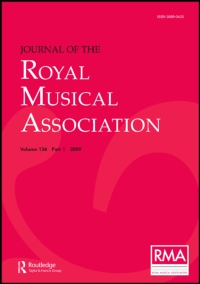No CrossRef data available.
Article contents
The Ancient Dance-Forms (Second Paper)
The Gigue
Published online by Cambridge University Press: 01 January 2020
Extract
When at your opening meeting of the thirty-ninth session I was privileged to read my first paper on “The Ancient Dance-Forms” to you, I regretted that the time at my disposal would only allow me to treat my subject to a detailed examination in part, and on that occasion I received your courteous attention while I brought before you a few historical facts relating to the ancestors of the forms that constituted the Suite, and to these forms themselves as far as, and excluding, the Gigue. I propose to-day to continue the subject; but I am afraid I shall not be able to add as many forms as I treated on the last occasion. Indeed, I intend to confine myself to one form only,—the Gigue. Spme explanation, however, is due to you to justify me in occupying your time with a single dance-form. Patriotism alone, apart from the importance of the form, should be sufficient justification. When I opened your last session I treated of seven dances, six of which became great favourites in England; yet every one of them was of foreign origin. In the Gigue, at least, we have what is without doubt a British product, and the comparative paucity of indigenous forms should cause such a dance to assume important dimensions in our musical history. Yet there are authorities,—yes, even English ones,—who would rob us of our right to this form and give it to the Continent. I am here to-day with the avowed intention of claiming the Jig for Britain as a native production, thoroughly in keeping, in its spirit and characteristics, with the traditions of this nation.
- Type
- Research Article
- Information
- Copyright
- Copyright © Royal Musical Association, 1913


